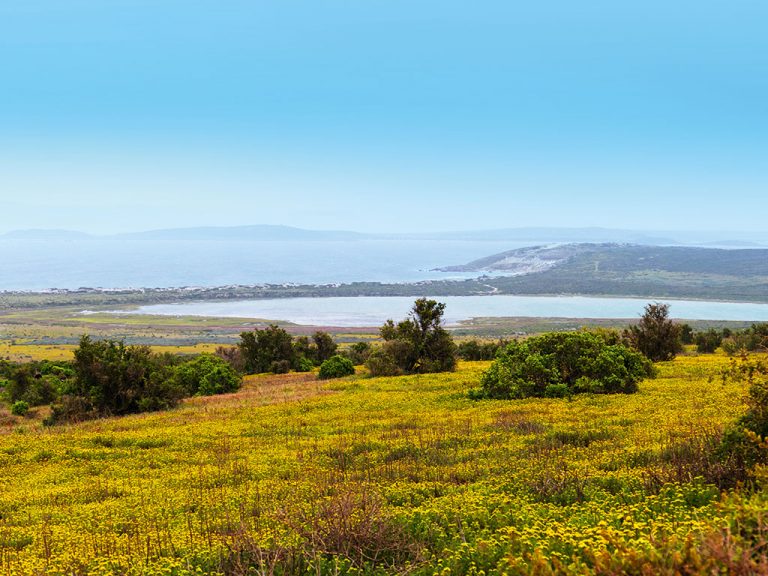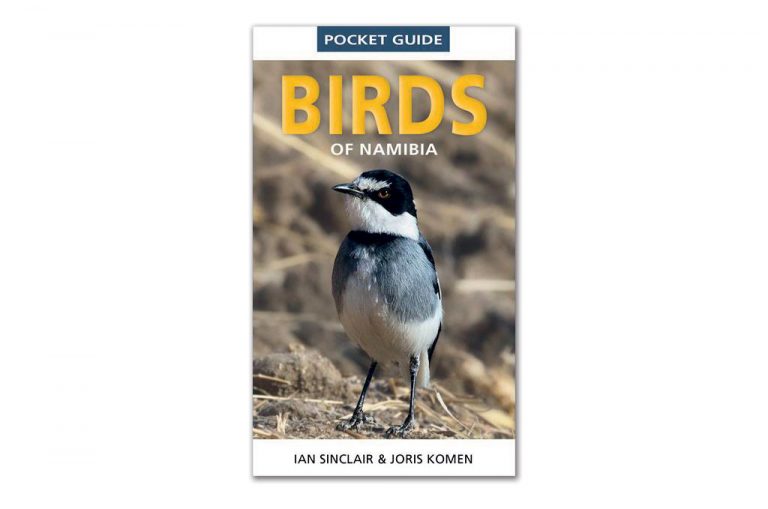Wetlands are biologically diverse ecosystems that provide a habitat for many important species, act as buffers against coastal storms, and naturally filter water by breaking down harmful pollutants.
They could not be more important as gatekeepers that help protect the natural world. South Africa has 23 designated Ramsar Sites, wetlands of international importance. Here are eight of them.

Langebaan Lagoon. Image: Stock
1. Blesbokspruit
Gauteng
The only Ramsar Site in Gauteng was formed in 1930 during the construction of road and pipeline embankments for the mining industry. The biggest attraction is the Marievale Bird Sanctuary, where one can see African spoonbills, yellow-billed ducks and goliath herons.
Contact: 0113645900
2. De Mond Nature Reserve
Western Cape

Damara Tern Image: Stock image
This World Heritage Site between Arniston and Struisbaai in the Western Cape is home to the Heuningnes Estuary, the smallest Ramsar wetland in South Africa. The estuary is an important nursery for the beautiful seabird, the Damara tern.
Contact: 0214830190
3. Makuleke Wetlands
Limpopo
Most of Makuleke lies within the Kruger National Park and forms the border of South Africa, Zimbabwe and Mozambique along the Limpopo River. It was the first Ramsar Site to be owned and co-managed by a community, not only in SA but worldwide. Game is plentiful and buffalo, nyala and bushbuck are common in the area.
Contact: 0124289111
4. Ndumo Game Reserve
KwaZulu Natal
Ndumo in KZN’s Maputaland forms the largest floodplain system in South Africa, consisting of five wetland types. It’s perhaps best known for its magnificent birdlife, with one of the highest bird counts in South Africa (430 species).
Contact: 0338451000
5. Nylsvley Nature Reserve
Limpopo
This floodplain in Limpopo occasionally erupts with activity, holding up to 80000 birds in years of high rainfall. The area also serves as a breeding ground for eight red-listed waterbirds and is the only site in South Africa where wild rice naturally occurs.
Contact: 0147436925
6. Langebaan Lagoon
Western Cape
This large but shallow marine lagoon on the West Coast includes islands, reed beds, sand flats and salt marshes. Last year, orcas were spotted in the lagoon. The five islands of Saldanha Bay to the north of the lagoon provide a home for nearly a quarter of a million seabirds.
Contact: 0124289111
7. St Lucia System
KwaZulu Natal
The St Lucia system on the KZN North Coast covers 155000 hectares and has one of the largest populations of Nile crocodiles in Southern Africa (it’s estimated there are 1500 crocs over two metres long), and the biggest hippo population in the country.
Contact: 0355901633
8. Verloren Vallei Nature Reserve
Mpumalanga

Wattled Crane Image: Stock image
One of the few places in the country where all three of the world’s endangered cranes breed, the Verloren Vallei Nature Reserve in Mpumalanga is an interlinked series of over 30 wetlands. An ongoing project to save the wattled crane has conservationists dress up in crane suits to feed the wattled crane chicks.
Contact: 0132540799
Books worth packing:
Garden Birds in Southern Africa
By Duncan Butchart (R230, Struik Nature)

Garden Birds of Southern Africa by Duncan Butchart Image: supplied
As an avid amateur birder and indigenous gardener, I loved this book by Duncan Butchart, author of several specialising on wildlife. Its format is wonderfully accessible and it’s easy to dip into. Unlike the more traditional identifying bird books with their paucity of information, this allows one full page per species, with information that grew my knowledge – detailing everything from a bird’s feeding habits to its lifespan and garden needs. The gardening filter is also really useful; there’s a section detailing what plants, from trees to grasses, grow in which area to attract which birds. Using this you can create an entire ecosystem in your space that will support conservation in your area and bring you endless pleasure. It’s an inspiration. – Sonya Schoeman
Birds of Namibia (Pocket Guide).
By Ian Sinclair and Joris Komen (R160, Struik Nature)

Birds of Namibia by Ian Sinclair and Joris Komen. Image: supplied
I am by no means a bird expert – let alone of birds from a different country – so when it came to reviewing this neat pocket book, I brought in long-time guide and Namibian local Andrew Gillies for a peer review. ‘Ah!’ he said excitedly, ‘they’ve included the updated names.’ The highly qualified, well-published authors have done just that, and more. The book is portable and easy to use, practical in both size and information. The images are placed on the outskirts of the pages, making it simple to skim through and find the bird group you’re looking for. And you don’t need to be in a reserve to use it. Driving along the long, straight roads gives you ample time to look up the black-shouldered kite you see fl itting through the air, or the kori bustard wandering sagely amid yellow grass. I’ll be taking it with me when I next return to Namibia. – Teagan Cunniffe
Also see: Subscribe to Getaway in May 2018, get a 25% discount and receive a beautiful boxed set of double-volume bird books (for the first 300 subscribers).
These featured wetlands first appeared in the February issue of Getaway magazine.
Get this issue →
Our February issue features 12 of the best tented-camps around the country, fun-filled water adventures in Northern KZN, Madagascar by motorbike plus a guide to finding everyday magic in underrated Lisbon.
You may also like
Related Posts
Wetlands are jewels of biodiversity and incredible destinations for wildlife watching. Station yourself at one...
read more
We sent our professional reviewer, Pippa de Bruyn, to find the best accommodation in Ficksburg...
read more
The barn swallows are summer chasers and during our Southern Hemisphere summertime we found them...
read more